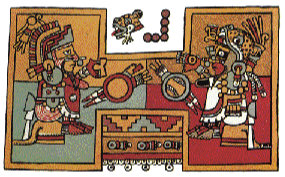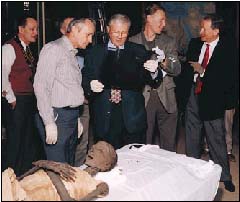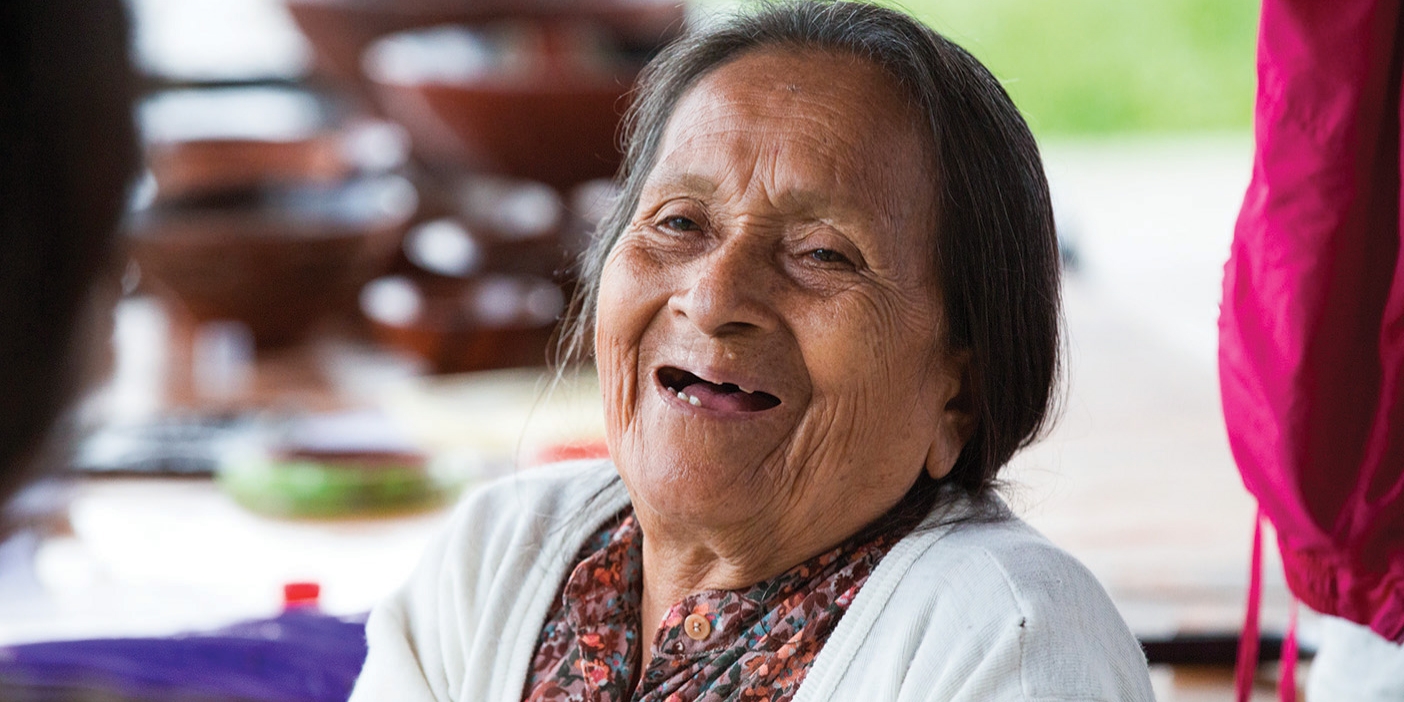
Researchers have found the oldest-known ball court in ancient America, similar to that depicted in this Mesoamerican drawing. Games played on these courts may have carried social and political significance.
By Julie Walker
Around 1600 B.C., while Egyptians were building pyramids and Druids were worshipping at Stonehenge, ancient Americans were playing round ball on a customized ball court, new evidence suggests.
A 3,600-year-old structure about the length of a modern football field was found in Paso de la Amada, Mexico, and predates other known ball courts by some 800 years.
“It took us a while to figure out it was a ball court–it was the last thing in the world we expected to find because it’s so early archaeologically, and the structure is so big,” says John E. Clark, a BYU anthropology professor who has been excavating in the area since 1985.
With Warren D. Hill and Michael Blake from the University of British Columbia, Clark reported the discovery in the April 30, 1998, issue of Nature. The researchers believe ball games were integral to the political, religious, and social life of the Mokaya (a name meaning “corn people”), who are thought to have been the ancestors of the Olmec and the Maya.
The Paso de la Amada court, built about 1600 B.C. and refurbished and expanded over the next 150 years, consisted of an 80-meter-long, flat playing alley bracketed by elevated “bleachers.”
In their Nature article, Hill, Blake, and Clark suggest that this newly discovered ball court may have been part of a network of similar courts throughout Mesoamerica.
“In one corner of Mexico researchers have found figurine representations of a team playing a ball game, in another corner they’ve found rubber balls, and in our corner we’ve found a ball court. These discoveries indicate to us that the ball game was pervasive in Middle America by 1600 B.C., before we have any evidence of high civilization anywhere in either North or South America,” says Clark.
From images on murals and pottery, archaeologists believe the ancient sport was similar to tlachtli, a game documented by Spanish conquistadors in a.d. 1519. Without using their hands or feet, players tried to keep a grapefruit-sized, solid rubber ball in play by bouncing it off their thighs, hips, and chests. In later-period ball courts, hoop-like stone rings have been found mounted to the walls at center court, leading to speculation that this ancient Mesoamerican sport inspired basketball. Others have drawn parallels to soccer and even tennis.
The games themselves may have ranged from simple recreational events to more highstakes competitions where losing team captains were beheaded and winners attained herolike status, says Clark. In Olmec times (about 1200 B.C.) kings were depicted as ball players, wearing leather helmets much like those used by football players in the 1940s.
“They may have been helmets for warriors or athletes or both,” says Clark. “In ancient times the distinctions between a great player, a great warrior, and a great leader may not have been that great.”
In a related find next to the ball court, researchers discovered the remains of a large dwelling that was built and abandoned during the same time period as the ball court. Clark speculates that the ancient homeowner was probably one of Mesoamerica’s first chiefs, a community leader who managed the adjacent sports arena.
“In modern terms, this is like finding Larry H. Miller’s house right next to the Delta Center,” says Clark, in reference to the Utah Jazz owner.
The house is the largest known domestic dwelling for that time period, leading researchers to believe it belonged to someone of importance, perhaps a chief, Clark says.
During this period (between 1800 and 1600 B.C.), most residents of this simple farming community lived in one-room dwellings and were social and economic peers. However, the existence of a chief’s house–a large structure with two hearths and an adjacent patio–shows that one family had begun to ascend the social ladder and accumulate wealth. This is significant to archaeologists because both the court and the house were constructed before the emergence of Mesoamerican civilization–before the advent of formalized leadership, class structures, or written language.
“One explanation we have for this development is the ball court next door. These are two very unusual structures in this time period, and they were both socially and politically important,” says Clark.
The idea that the ball court helped one family obtain wealth and power would explain how broader patterns of formal leadership were established in the region, says Clark. This type of class division is fundamental to the development of higher civilizations.
Clark speculates that in Mokayan times this chief staged events at the ball court, throwing parties or feasts to attain special status in the community. His family’s popularity and privilege endured through five centuries, at which time both the ball court and the large residence were abandoned.
I’ve made the argument that we have evidence of the beginnings of hereditary privilege here, which is important because this is the first small step to high civilization and social stratification, where you get wide divisions in class,” he says.
While the Mokaya have only recently been identified, the culture assumes an important place in Mesoamerica because it may have laid the foundation for the emergence of the great Olmec and Mayan civilizations. How these great civilizations suddenly emerged, with their spectacular art and colossal architecture, is a mystery to archaeologists.
“By going back in time to the earliest farming villages in Mexico to find their roots, we hope to uncover the origins of Mesoamerican civilization,” Clark says.









